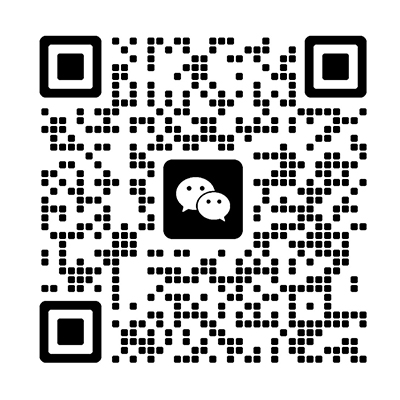©2024 Zhejiang Zhiben Law Firm. All rights reserved.Zhejiang
LABEL: One Belt One Road International LegalBusiness , Corporate and M&A ,
On September 18, 2024, the "Regulations on Export Control of Dual Use Items of the People's Republic of China" (hereinafter referred to as the "Regulations") were reviewed and approved by the 41st executive meeting of the State Council. On the evening of October 19, the Regulations were finally officially announced and came into effect on December 1. The formulation of the "Regulations" is one of the important achievements in the construction of China's foreign-related legal system, and it is also an important foreign-related regulation for implementing the "Export Control Law of the People's Republic of China" (hereinafter referred to as "the Export Control Law"), further summarizing advanced practical experience suitable for China's national conditions, integrating the current scattered dual-use item management system regulations, and achieving high-quality development and high-level security benign interaction.
Since its implementation on December 1, 2020, the Export Control Law, as the core law governing the field of export control, has established the basic framework and rules of China's export control system. In order to better implement the Export Control Law, strengthen and regulate the export control of dual-use items, on April 22, 2022, the Ministry of Commerce released the "Dual Use Item Export Control Regulations (Draft for Comments)" (hereinafter referred to as the "Draft for Comments"), which is open to the public for comments. The relevant departments such as the Ministry of Commerce and the Ministry of Justice have fully evaluated the relevant opinions and promoted the legislative work of the "Regulations", which is specifically reflected in the "2023 Legislative Work Plan of the State Council" for the first time, which includes the relevant work of the Regulations and mentions the need to "prepare for the formulation of dual-use item export control regulations", while the "2024 Legislative Work Plan of the State Council" mentions the need to "formulate dual-use item export control regulations".
Based on the changes in the domestic and international situation in recent years, the Regulation summarizes the implementation experience of current administrative regulations on dual-use item export control and draws on international experience and practices. It not only focuses on improving the efficiency of dual-use item export control, but also creates an expected trade system environment, aiming to provide institutional support and legal protection for safeguarding national security and interests through improving export control measures. The Regulation consists of 6 chapters and 50 articles. This article will briefly review the key points of the Regulation for the reference and practical application of enterprises.
1、 Unified management of dual-use items to enhance the effectiveness of dual-use item export control
In the field of export control of dual-use items, China has successively issued regulations such as the "Regulations on Export Control of Nuclear Dual Use Items and Related Technologies of the People's Republic of China", the "Regulations on Export Control of Missiles and Related Items and Technologies of the People's Republic of China", the "Regulations on Export Control of Biological Dual Use Items and Related Equipment and Technologies of the People's Republic of China", and the "Measures for Export Control of Chemicals and Related Equipment and Technologies". After the promulgation of the Regulations, according to Article 50 of the Regulations, all four regulations mentioned above will be abolished from the effective date of the Regulations. This means that the Regulation will soon serve as an administrative regulation for the unified export control of dual-use items, addressing issues such as relatively scattered regulations and inadequate control measures.
It should be pointed out that the Regulations apply to the export control of dual-use items, as well as other goods, technologies, services, and other items related to maintaining national security and interests, fulfilling international obligations such as non-proliferation. According to Article 47 of the Regulations, the regulations applicable to the export control of the following dual-use items deserve special attention:
For the export control of monitored chemicals in dual-use items, priority should be given to the provisions of the "Regulations on the Administration of Monitored Chemicals of the People's Republic of China" (hereinafter referred to as the "Regulations on Monitored Chemicals"). Matters not specified in the "Regulations on Monitored Chemicals" can be executed by the competent department of industry and information technology of the State Council in accordance with the "Export Control Law" and the "Regulations".
For the export control of some missiles and related items and technologies, namely the export of items and technologies listed in Part I of the "Missile and Related Items and Technologies Export Control List" attached to the "Regulations on the Export Control of Missiles and Related Items and Technologies of the People's Republic of China", they will be included in the military export management list and handled in accordance with the "Regulations on the Administration of Military Exports of the People's Republic of China" and other relevant regulations.
2、 Refine the export control system for dual-use items
1. Unified dual-use item export control list
Regarding the export control list of dual-use items, currently in addition to the "Catalogue for the Administration of Import and Export Licenses for Dual Use Items and Technologies", there are also "Export Control List for Nuclear Dual Use Items and Related Technologies", "Export Control List for Missiles and Related Items and Technologies", "Export Control List for Biological Dual Use Items and Related Equipment and Technologies", "Export Control List for Chemicals and Related Equipment and Technologies", etc.
Article 11 of the Regulations stipulates: "The competent commerce department of the State Council shall, in accordance with the provisions of the Export Control Law and this Regulation, and in accordance with the export control policies for dual-use items, formulate and adjust the dual-use item export control list in conjunction with relevant national departments in accordance with the prescribed procedures, and publish it in a timely manner. The formulation and adjustment of the dual-use item export control list may solicit opinions from relevant enterprises, chambers of commerce, associations, and other parties in an appropriate manner, and conduct industry investigations and evaluations when necessary." This article is in line with the requirements of Article 4 and Article 9 (1) of the Export Control Law, but compared to Article 13 of the 2022 draft for soliciting opinions, this article has deleted the phrase "setting control codes for items on the list" and specific considerations when formulating and adjusting the list.
Although the unified export control list for dual-use items has not yet been released, officials from the Ministry of Justice and the Ministry of Commerce stated in their response to a reporter's question regarding the "Regulations" that "currently, the Ministry of Commerce is developing a unified export control list for dual-use items, which will be implemented simultaneously with the" Regulations ". Based on this, it can be understood that a unified dual-use item export control list has been determined to be issued in the future. At that time, the Ministry of Commerce and other departments may further modify or even abolish relevant regulations, normative documents, and catalog files to complete the unified dual-use item export control list.
2. Temporary control
In addition to export controls on items listed on the dual-use items export control list, the Ministry of Commerce may take temporary control and export prohibition measures on specific items. According to Article 9, Paragraph 2 of the Export Control Law, Article 12 of the Regulations has refined the procedural requirements for implementing temporary controls, clarifying the frequency and duration of implementing temporary controls, as well as the evaluation requirements for implementing temporary controls. Specifically, the implementation period of temporary control shall not exceed 2 years at a time, and an evaluation shall be conducted in a timely manner before the expiration of the temporary control implementation period. Based on the evaluation results, the following decisions shall be made: (1) If the control is no longer needed, the temporary control shall be cancelled; (2) For items that require continued control but are not suitable for inclusion in the dual-use export control list, temporary control shall be extended no more than twice; (3) For items that require long-term control, they shall be included in the export control list for dual-use items.
3. End user and end use management
Based on the relevant provisions of the Export Control Law, the Regulation further strengthens the management of end-users and end uses throughout the entire export process, and mainly supplements and refines the following aspects:
Firstly, Article 16 and Article 24 of the Regulations stipulate that when applying for an export license for dual-use items, it is necessary to submit proof of the end user and end use of the dual-use item, and it is not allowed to change the end user and end use of the dual-use item without authorization.
Secondly, Article 18 and Article 25 of the Regulations stipulate that if there is a change in the end user and end use, the export operator shall immediately stop exporting, report to the competent commerce department of the State Council, and cooperate with verification.
Furthermore, Article 26 of the Regulation draws on international experience and practices to establish a list of concerned entities. It stipulates that importers and end-users who do not cooperate with the verification of end-users and end uses can be included in the list of concerned entities, and export operators cannot enjoy various licensing facilitation measures for transactions with them. It also clarifies that after verification by the Ministry of Commerce, the concerned entities can be removed from the list. The attention list system is actually a "grey list" system compared to the new provisions of the Export Control Law and the draft for soliciting opinions. This also requires importers and end-users to cooperate with the Ministry of Commerce's verification of end-users and end uses, and provide relevant supporting materials in a timely manner as required.
4. Further refinement of the control list system
The Regulation further refines the "control list" system stipulated in Article 18 of the Export Control Law from the following aspects:
Clarify the specific circumstances in which importers and end-users are included in the control list (Article 28);
It stipulates the restrictive measures that can be taken against importers and end-users listed in the control list, including prohibiting or restricting the trade of dual-use items, ordering the suspension of the export of dual-use items, etc. (Article 29);
The administrative procedures for removing from the control list have been established. Importers and end-users listed on the control list must cooperate with the investigation, truthfully state relevant facts, cease illegal activities, take proactive measures to eliminate harmful consequences, make and fulfill commitments as required, and no longer fall under the circumstances specified in Article 28 before applying to the competent commerce department of the State Council for removal from the control list (Article 30).
3、 Further stipulate facilitation measures for the export of dual-use items
1. Cancel the registration system for dual-use item export operators
In terms of business qualifications, after the implementation of the Regulation, the registration system for export operators stipulated in the current administrative regulations and rules in the field of dual-use items has been abolished. Specifically, after the implementation of the Regulation, export operators do not need to apply for registration as dual-use item export operators in advance and can directly apply for export licenses.
2. Refine the general licensing system
Article 14 of the Export Control Law provides principled provisions on the general licensing system, which means that if an export operator establishes an internal compliance system for export control and operates well, the national export control management department may provide convenient measures such as general licensing for its export of controlled items. Based on this, the Regulation has refined the general licensing system and made provisions on the application conditions, procedures, and other aspects of general licensing.
Specifically, Article 15 of the Regulation clarifies the functions and validity period of a general license, while Article 16 stipulates that export operators who establish an internal compliance system for dual-use item export control and operate it well, have relevant dual-use item export records and relatively fixed export channels and end-users, can apply for a general license from the competent commerce department of the State Council, and list the material requirements for applying for a general license. Compared with the conditions for applying for a general license stipulated in the draft for soliciting opinions, the conditions set in the Regulation are slightly relaxed, but the Regulation does not provide further judgment standards for the long-standing concern of "establishing an internal compliance system for export control of dual-use items and operating well". We look forward to relevant departments clarifying this in the subsequent implementation process of the Regulation.
3. Obtain export certificates by registering and filling in information
In terms of licensing facilitation measures, the Regulation is in line with international common rules. For exports that meet specific circumstances, such as outbound maintenance, exhibitions, etc., export operators can "obtain export certificates by registering and filling in information" and declare exports on their own.
Specifically, Article 19 of the Regulations stipulates several specific circumstances in which export certificates can be obtained through registration and information filling, namely: (1) re shipment to the original end user at the original export location within a reasonable period of time after import inspection, testing, or inspection; (2) After outbound maintenance, testing or inspection, it shall be transported back into the country within a reasonable period of time; (3) Participate in exhibitions held within the territory of the People's Republic of China and immediately transport them back to their original export location after the exhibition ends; (4) Participate in exhibitions held outside the People's Republic of China and immediately transport them back into the country in their original form after the exhibition ends; (5) Outbound maintenance of civil aircraft components and export of spare parts; (6) Other circumstances stipulated by the competent commerce department of the State Council.
It should be noted that when there are changes in the relevant export factors, export operators should re register and fill in information to obtain new export certificates, or apply for single or general licenses in accordance with the provisions of the Regulations. In addition, if the export operator knows or should know that the export no longer meets the above situation, or receives a notice from the competent commerce department of the State Council, it shall immediately stop the export and report to the competent commerce department of the State Council.
4. Clarify the situations where facilitation measures for obtaining export certificates cannot be implemented
Article 20 of the Regulation further clarifies the situation where facilitation measures for obtaining export certificates cannot be implemented. If an export operator falls under any of the following circumstances, they shall not apply for a general license or obtain an export certificate through registration and information filling:
(1) The unit has been criminally punished for illegal export control of dual-use items, or its directly responsible supervisors and other directly responsible personnel related to dual-use item export have been criminally punished for illegal export control of dual-use items;
(2) Received administrative penalties for illegal export control of dual-use items within 5 years and the circumstances are serious;
(3) Wholly owned enterprises, representative offices, and branch offices established within the territory of the People's Republic of China by overseas organizations and individuals included in the control list stipulated in Article 28 of the Regulations;
(4) Other circumstances stipulated by the competent commerce department of the State Council.
4、 Concrete application scope outside the domain
The Regulation comprehensively promotes the rule of law in China and abroad, based on the national conditions, improves the export control system that is coordinated with international rules, and specifies the relevant content of the extraterritorial application of export control.
Article 49 of the Regulations is a key provision reflecting its extraterritorial application, which stipulates that "when overseas organizations and individuals transfer or provide the following goods, technologies, and services to specific destination countries and regions, specific organizations and individuals outside the territory of the People's Republic of China, the competent commerce department of the State Council may require relevant operators to comply with the relevant provisions of this Regulation: (1) dual-use items manufactured overseas that contain, integrate, or mix specific dual-use items originating from the People's Republic of China; (2) dual-use items manufactured overseas using specific technologies and other dual-use items originating from the People's Republic of China; (3) specific dual-use items originating from the People's Republic of China." This article uses the wording "may require" instead of "should require". The, Indicating that the competent authorities can decide whether to initiate relevant legal procedures based on specific transaction situations and respond flexibly.
This provision is considered similar in some respects to the Foreign Direct Product Rule and De Minimis Rule of the US Export Control Act (EAR), and in future enforcement practices will authorize relevant government departments to have extraterritorial jurisdiction over items, namely the power to regulate the export/re export of Chinese origin items, specific overseas manufactured items containing, integrating or mixed with Chinese origin items, and specific overseas manufactured items using Chinese origin items. It is worth noting that based on our practical observation and business experience, although Article 49 of the Regulation does not stipulate the minimum proportion of Chinese origin items "contained, integrated or mixed" in products, this ambiguity may cause certain difficulties in the understanding and application of this provision in the future. However, on the premise that the Chinese government is committed to optimizing high-level opening-up and creating a high-quality business environment, relevant enterprises may not need to worry too much.
In addition, Article 38 of the Regulations also stipulates that "Chinese citizens, legal persons, and unincorporated organizations shall immediately report to the competent commerce department of the State Council when they receive requests from foreign governments for visits, on-site inspections, etc. related to export control. Without the consent of the competent commerce department of the State Council, they shall not accept or promise to accept relevant visits, on-site inspections, etc. from foreign governments." This is also consistent with the content of Announcement No. 60 of the Ministry of Commerce in 2007.
5、 Legal responsibility
Compared with the existing penalty provisions of the Export Control Law, the Regulation presents a more stringent trend in cracking down on relevant illegal activities, with a wider range of subjects involved and more severe penalties. The following table is a brief summary of the penalty provisions involved in the Regulations, for reference only.
6、 Tips for key points of concern for enterprises
The promulgation and implementation of the Regulation means that China's export control system construction has entered a new stage. Compared to the Export Control Law, the Regulation has made detailed provisions on many important contents, which will bring new opportunities and challenges to relevant enterprises. It is recommended that enterprises should further examine and organize relevant business processes and systems in accordance with the relevant provisions of the Regulation as soon as possible, and attach importance to and do a good job in export control compliance. Specifically, there are the following key points that enterprises should prioritize:
(1) Pay attention to the export control obligations and responsibilities further clarified in the Regulations. The Regulation clarifies the scope and requirements for the control of dual-use items, especially Article 49 of the Regulation on the extraterritorial application of items. It is recommended that Chinese enterprises and overseas institutions refer to the Regulation to complete risk assessments of exported products, in order to avoid violating the requirements of the Regulation, and re-examine and adjust relevant business models and overseas business strategies accordingly;
(2) According to the regulations, review and improve the relevant clauses of important contracts such as sales contracts and commission contracts with foreign clients, and try to avoid situations that conflict with administrative mandatory regulations as much as possible;
(3) Combining the "attention list" and "control list" systems, strengthen the screening of trading customers, inform them of their compliance obligations in advance, and actively cooperate with relevant regulatory and law enforcement activities;
(4) Pay attention to the compliance management of end users and end uses of items, do a good job in daily export control compliance management, properly keep relevant information, and respond to the daily supervision and inquiry activities of relevant competent departments normally;
(5) Proactively fulfill the reporting obligations stipulated in the Regulations, including the reporting obligations on the actual export situation of dual-use items, situations where export certificates are not applicable for export, end-user and end use risk situations, transactions with entities on the control list, and receiving visits and on-site verification requirements related to export control from foreign governments.
Although the Regulation has made many enforceable provisions, there are still some contents that need to be clarified or refined. In order to help all sectors of society understand and apply the provisions of the Regulation as soon as possible, based on our experience, relevant departments may timely publish some typical cases during the implementation of the Regulation for reference and learning by all sectors of society. In addition, the "Regulations" also mention many documents that urgently need to be formulated in the next step, such as the "Dual use Item Export Control List", specific measures for the transit, transshipment, transportation, re export, or export of dual-use items from customs special supervision areas and bonded supervision sites to overseas. It is recommended that companies continue to monitor the legislative and enforcement trends of relevant departments, stay informed of the latest information, and develop or adjust response plans accordingly.
Finally, relevant enterprises should seize the opportunity of the promulgation and implementation of the Regulations, build internal systems in accordance with the requirements of the Regulations, strengthen manpower allocation, and if necessary, consult external dual-use export control experts. Based on risk assessment, they should operate in accordance with the law, effectively avoid and reduce trade compliance risks, improve enterprise efficiency and effectiveness, continuously enhance competitiveness, establish a good corporate image of honest operation and responsibility, and achieve sustainable development.





